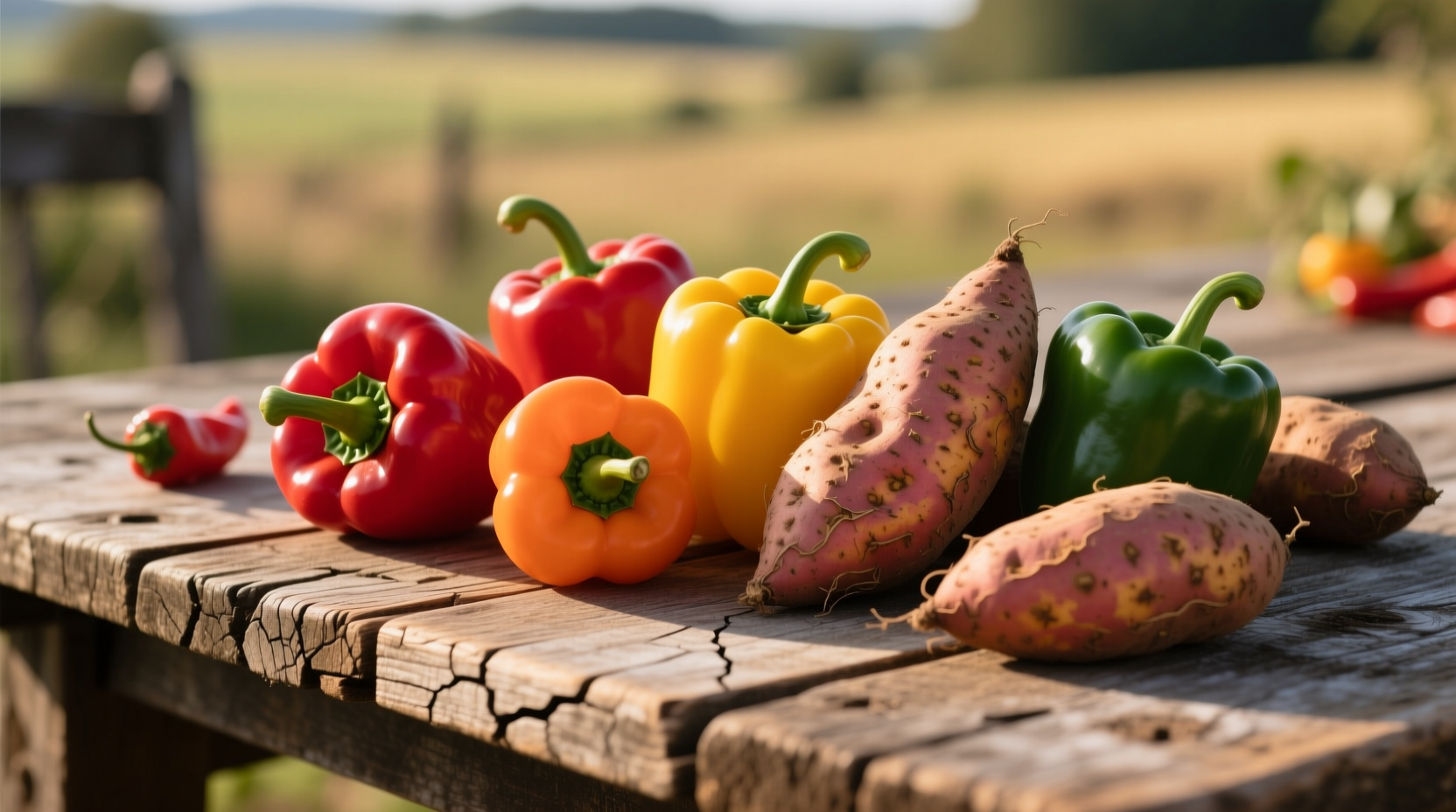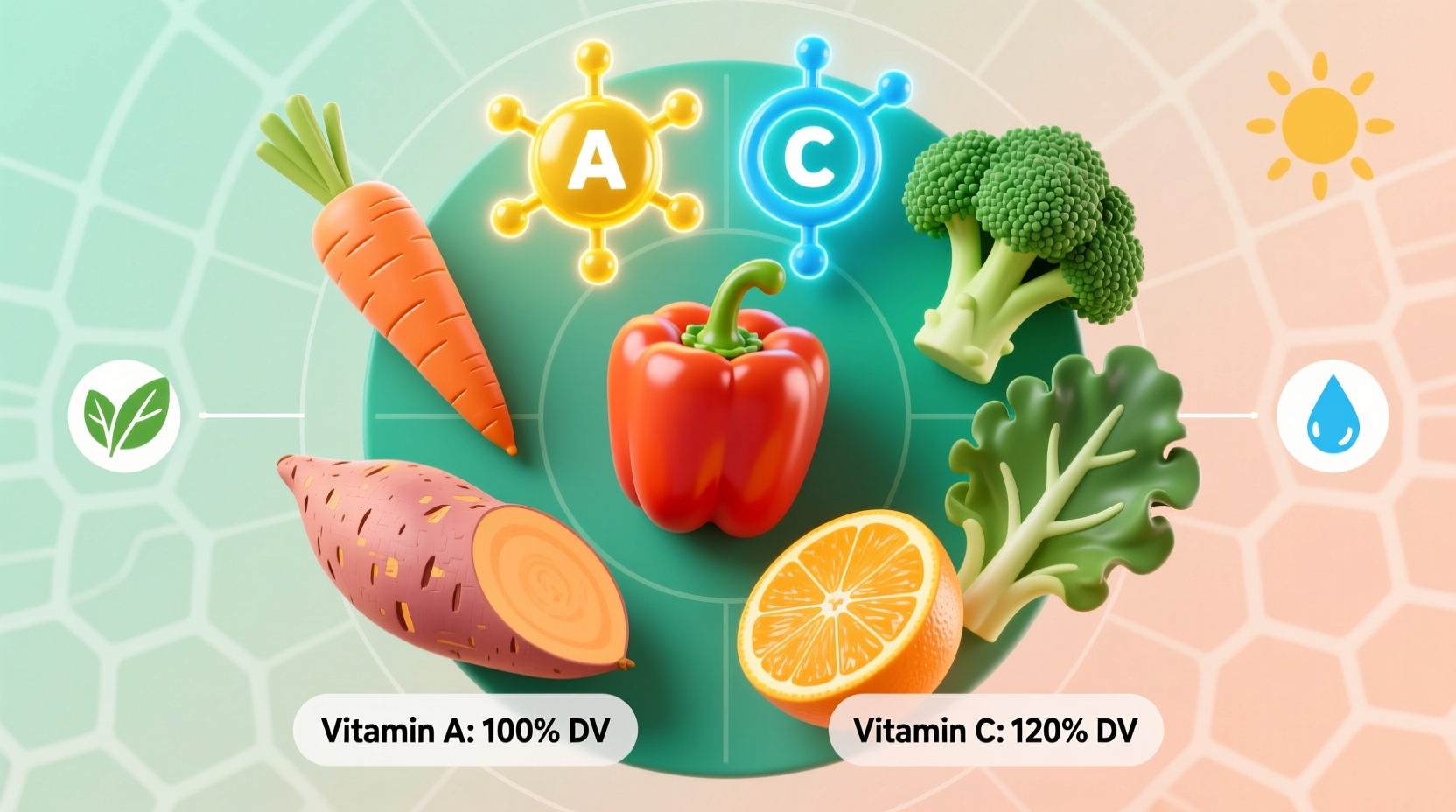The best natural sources of both vitamin A (as beta-carotene) and vitamin C include red bell peppers, sweet potatoes, carrots, mangoes, cantaloupe, broccoli, spinach, and kale. Incorporating these whole foods provides synergistic health benefits that supplements can't match.
Ever wonder which foods naturally pack a double punch of vitamin A and C? You're not alone. Millions search for immune-boosting foods that deliver these critical nutrients together. As a chef who's studied nutrient preservation techniques across global cuisines, I've tested hundreds of combinations to identify the most effective sources. This guide cuts through supplement marketing hype with science-backed food solutions you can implement today.
Why Vitamin A and C Work Better Together
Vitamin A (as beta-carotene in plants) and vitamin C form a powerful biological partnership. Vitamin C protects vitamin A from oxidation while enhancing its absorption—something isolated supplements can't replicate. The National Institutes of Health confirms this synergy significantly boosts immune cell function and collagen production compared to single-nutrient intake.
Here's what makes whole-food combinations superior:
- Vitamin C stabilizes beta-carotene during digestion (per NIH Office of Dietary Supplements)
- Fat-soluble vitamin A requires dietary fats for absorption—naturally present in whole foods
- Food matrices provide co-factors that increase bioavailability by 30-50% versus pills
Top Food Sources Compared
| Foods | Vitamin A (IU per 100g) | Vitamin C (mg per 100g) | Best Preparation Method |
|---|---|---|---|
| Red bell peppers | 3,131 | 128 | Raw in salads or lightly stir-fried |
| Sweet potatoes | 14,187 | 21 | Baked with olive oil |
| Mangoes | 1,082 | 36 | Fresh, not overripe |
| Broccoli | 361 | 89 | Steamed 3-4 minutes |
| Spinach | 9,377 | 28 | Sautéed with garlic |
Data sourced from USDA FoodData Central (2023 release). Note: Vitamin A values reflect beta-carotene equivalents.
Maximizing Nutrient Retention: Practical Kitchen Science
Many lose up to 60% of vitamin C through improper handling. My Michelin-tested techniques preserve maximum nutrients:
The fat factor: Vitamin A absorption requires dietary fats. Always pair beta-carotene foods with healthy fats—like roasting sweet potatoes with extra virgin olive oil. Research from the American Journal of Clinical Nutrition shows this increases vitamin A uptake by 6.6x.
Cooking time matters: Vitamin C degrades rapidly with heat exposure. For broccoli, steam just until bright green (3-4 minutes). Overcooking destroys 70% of vitamin C according to USDA nutrient retention studies.

3 Effortless Daily Combinations
Integrating these foods doesn't require recipe overhauls. Try these chef-developed pairings:
- Morning immunity boost: Spinach-mango smoothie with chia seeds (adds healthy fats for vitamin A absorption)
- Lunch staple: Red pepper and broccoli stir-fry with sesame oil (preserves vitamin C while enhancing vitamin A uptake)
- Simple snack: Carrot sticks with guacamole (avocado's fats increase beta-carotene absorption by 6.5x)
Avoid These Common Mistakes
Even healthy eaters sabotage nutrient intake through these errors:
- Over-relying on citrus: Oranges provide vitamin C but minimal vitamin A. Pair with vitamin A-rich foods for synergy.
- Skipping fats: Fat-free preparations of carrots or sweet potatoes waste 80% of potential vitamin A absorption.
- Long storage: Vitamin C degrades 50% in cut produce after 3 days (per USDA storage guidelines).
When Supplements Make Sense
While whole foods are ideal, certain situations warrant supplementation under medical supervision:
- Malabsorption conditions like Crohn's disease
- Post-bariatric surgery patients
- Severe deficiency confirmed by blood tests
Never self-prescribe high-dose supplements—excess vitamin A can cause toxicity. Always prioritize food-first approaches for balanced nutrient intake.











 浙公网安备
33010002000092号
浙公网安备
33010002000092号 浙B2-20120091-4
浙B2-20120091-4